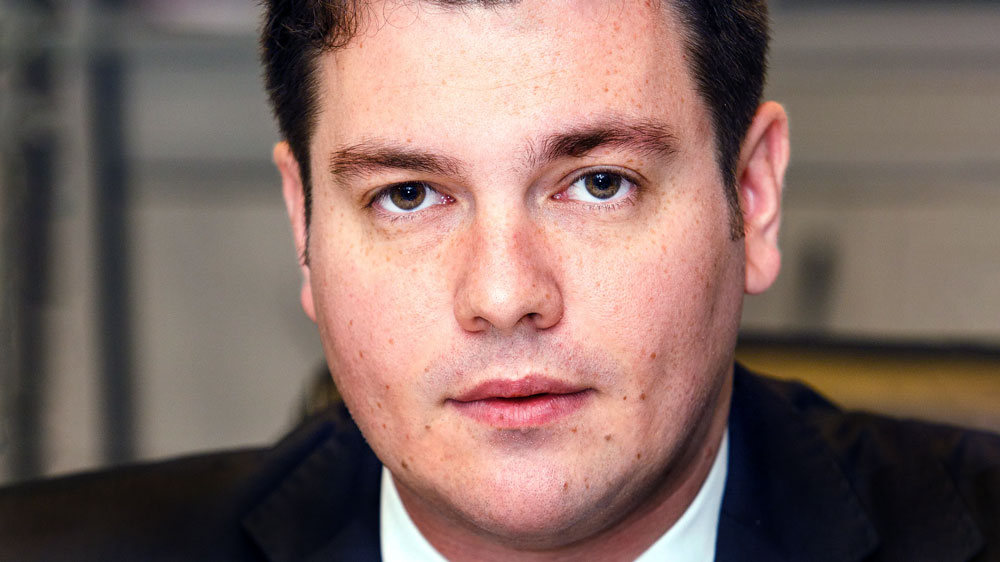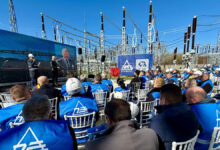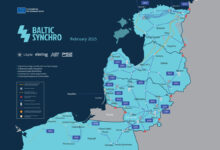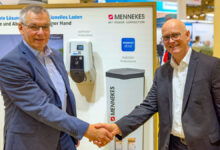Nuclearelectrica’s New Strategic Investment Plan of RON 2.29bn by 2025
Shareholders of the National Company Nuclearelectrica (SNN) on June 12 approved a new strategic investment plan of the nuclear power producer for the period 2020-2025. The value of investments that would be made amounts to RON 2.29bn, according to Cosmin Ghita, CEO of Nuclearelectrica. After giving up collaboration with China General Nuclear Power Corporation (CGN) for building Units 3 and 4 in Cernavoda, Nuclearelectrica is now preparing the draw up of a new feasibility study for the construction of Unit 3.
Background
In 1996, Romania was commissioning the first CANDU reactor and in 2007 the second, the units covering about 20% of the country’s energy production. Two years later, in 2009, Romania decided that it needed two more reactors. Although almost 11 years have passed since that decision, the units have never been built. In fact, they haven’t even been started, and now the project is resumed from scratch. In 2009, Nuclearelectrica set up a joint venture for building the units together with RWE, GDF Suez, ENEL, CEZ, ArcelorMittal and Iberdrola. But unsatisfied with Government’s indecision, they decided to withdraw from the project several years later. In 2013, the Government signed a letter of intent with the Chinese company China General Nuclear Power (CGN), for implementing the project whose cost was estimated at the time at USD 8bn. After 8 years of dithering, Romania now starts from scratch, but in a European Union where the new Green Deal strategy calls into question funding for such projects.
Energy divides the EU
Giving up the construction of Units 3 and 4 with the Chinese was also considered a good thing by the former Energy Minister, Victor Grigorescu, but he pointed out that for now we have nothing to replace it with. Attending an online energy conference, Victor Grigorescu, former Energy Minister, said Romania must now fight with the reluctance of European partners on nuclear power.
“We have a problem including with our traditional allies in the nuclear sector. Because we have divergences with them on financing for natural gas. There are some who today believe that natural gas should not be funded from European funds either, because it is quite polluting. It is difficult to deny the role of gas in transition and it would be tragical not to be able to promote both natural gas and nuclear power in Brussels. We should join a number of Member States that would continue to defend a desideratum of the EU Treaty, namely that energy mix is a national prerogative,” the former minister said.
Increased interest in hydrogen
Nuclearelectrica has recently signed, together with other energy companies, research institutes and associations, a joint letter to be sent to the European Commission on the contribution of low carbon emission sources to the production of hydrogen, thus leading to reaching the decarbonization targets established for 2050.
Currently, hydrogen production, necessary in the industry, transport and energy production, is ensured at a rate of 95% by using methane gas, which leads to significant CO2 emissions. For each kilogram of hydrogen produced, 10 kilograms of CO2 are emitted. According to the study conducted by the International Energy Agency (IEA) in 2019, globally there is an increase in applications that use hydrogen, as well as an ever-increasing demand for hydrogen coming from clean energy sources, leading to the decarbonization of the electricity production sector. Companies and associations signatory of this joint letter addressed to the European Commission (Vice-President Frans Timmermans and Commissioners Kadri Simson, Thierry Breton and Mariya Gabriel) recommend considering a number of proposals and principles on the generation of clean hydrogen in the papers Energy System Integration Strategy and Clean Hydrogen Strategy, which will be issued in the near future by the Commission under the European Green Deal. The proposals consist of encouraging production and demand for hydrogen coming from clean sources, which will allow the replacement of hydrogen from significant CO2 emissions sources currently used in the industry and expanding the use of clean hydrogen to other industrial sectors, with role in decarbonization.
Project for the production of the isotope Cobalt 60
One of the novelties brought by the strategic investment plan of the company for the period 2020-2025 is the production in Cernavoda of the isotope Cobalt 60, used in radiotherapy for treating cancer, in cooperation with Nordion Canada, the largest global supplier in the field, with which SNN concluded in this regard a non-binding memorandum of understanding last summer.
“The production of Co-60 in reactors at Cernavoda NPP can represent, besides a business opportunity, an opportunity for creating a better image for the Romanian nuclear industry; implicitly, it can contribute to increasing the degree of acceptance of the population regarding electricity production in nuclear power plants. Moreover, SNN has the potential of becoming a major player in ensuring the supply of Co-60 within the European Union, being able to bring additional arguments in the process of supporting the project of refurbishment of Unit 1 before the European institutions,” Nuclearelectrica shows. The project for the production of isotope Cobalt 60 has an estimated value of RON 70.4mln and will be carried out in several stages. The first stage is scheduled to be held this year and includes the draw up of the preliminary and prefeasibility studies. Their cost is estimated at CAD 250,000, the studies being financed and contracted by Nordion Canada. The second stage includes pre-engineering/engineering studies, feasibility studies (including corporate approvals) and getting the CNCAN approvals: 2021-2022. It has an estimated cost of CAD 2,000,000. Finally, the third stage will target the design and implementation of the project, following to be carried out during 2022-2027. The estimated cost of this stage is CAD 20-30mln. Currently, at global level, there are 22 reactors that produce Cobalt 60, of which 10 are CANDU, similar to those in Cernavoda, and are located in Canada, Argentine and China.
The list of investment objectives included in the strategy:
- Inspections and workovers performed at Unit 1, respectively Unit 2, during the planned shutdowns (RON 737.7 million);
- Cobalt 60 project – RON 70.4 million;
- Refurbishment of Cernavoda NPP Unit 1 – Phase 1 Defining the project (studies) – RON 250mln;
- The project of Unit 1 refurbishment is structured in 3 distinct phases:
- Phase 1 – Proving the ability of the current components of the Unit 1 reactor to operate over 210,000 hours at rated output, until at least the end of 2026, finalization of the purpose of the Refurbishment Project, as well as demonstration of the feasibility of the refurbishment project;
- Phase 2 – Contracting the General Contractor for the implementation of the Refurbishment Project and placing orders for equipment with a long manufacturing cycle, as well as preparing the infrastructure necessary for project performance;
- Phase 3 – Shutdown of the unit and effective implementation of the Project, which consists of the replacement of the following current components of the reactor of Unit 1: fuel channels, calandria tubes and feeders, but also in the execution of upgrades and replacements of components in existing facilities of the unit.
- Construction of the Intermediary Dry Spent Fuel Storage Facility (DICA) – RON 85.6mln; Ensuring the intermediary dry spent fuel storage facilities is made by building MACSTOR modules;
- Modernization and extension of the physical protection system – RON 87.1mln;
- Arrangement of Unit 5 – RON 92.1mln; The arrangement of Unit 5 involves works necessary to change the destination of the existing constructions on its site from the one for a nuclear power plant, to the one for other support objectives, useful during the life of Units 1 and 2 in operation and the future Units 3 and 4. The objective of arranging Unit 5 was included in the investment project with PJ-11-006 code ‘Improvement of Cernavoda NPP’s response, respectively of nuclear security functions in case of beyond design base events, following the nuclear accident at the Fukushima 1 nuclear power plant, Japan’.
- Cernavoda NPP heavy water detritiation facility (CTRF) – RON 812mln; In order to reduce the concentration of tritium and limit its contribution to the radiation doses borne by the staff of the nuclear power plant and considering the economic advantages resulting from the capitalization of tritium, the heavy water detritiation facility (CTRF) will be built at Cernavoda NPP, which will ensure the removal of tritium from heavy water and maintain its concentration as low as possible.
- Digital Modernization Project – RON 218.7mln; The digital modernization process has 4 components: The component of technological modernization for computer and process systems; the component of business processes digitization; the innovation and education component, the Digital Excellence Center; the Cybersecurity Component.
Slight decrease in profit in Q1/2020
Nuclearelectrica posted a net profit of RON 215.05mln in the first quarter this year, falling by 1.9% compared to the similar period of last year, according to the quarterly report of the company. In Q1/2020, gross electricity production at the two operational units of Cernavoda NPP was 3,087,524 MWh.







